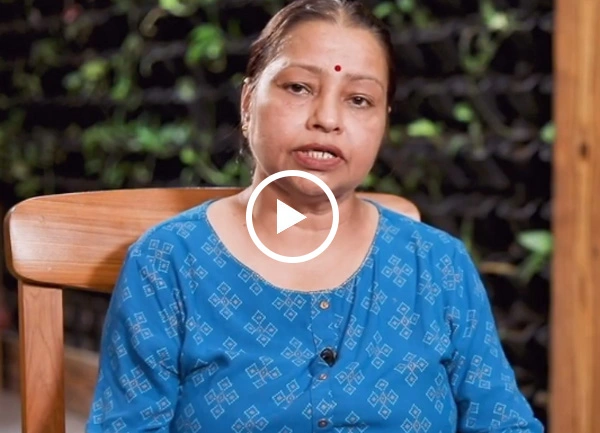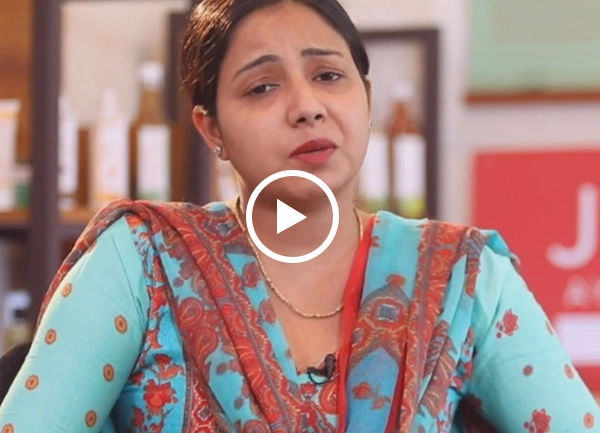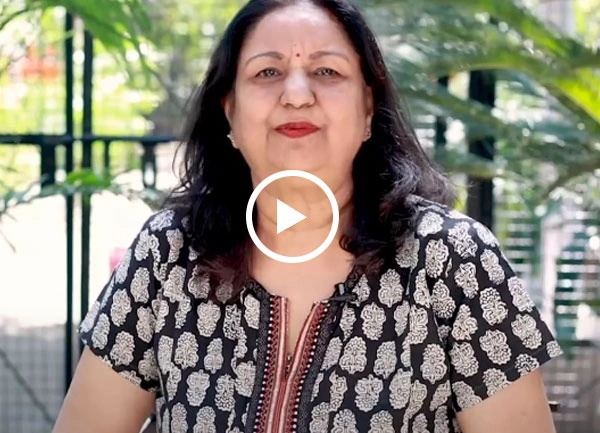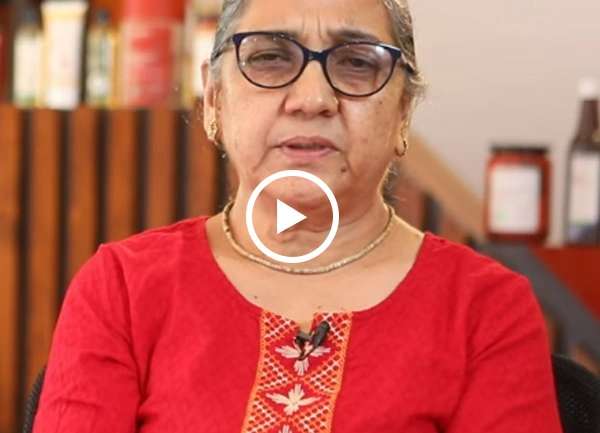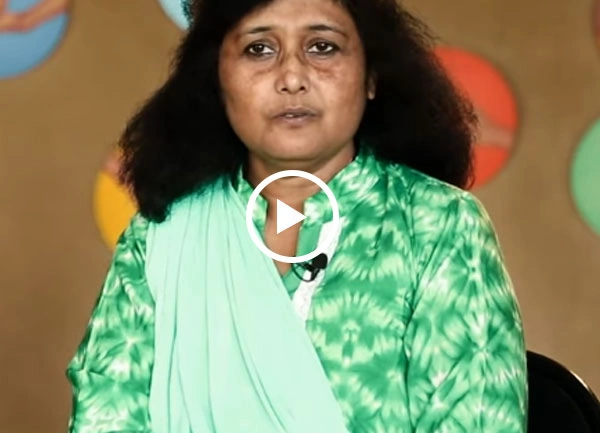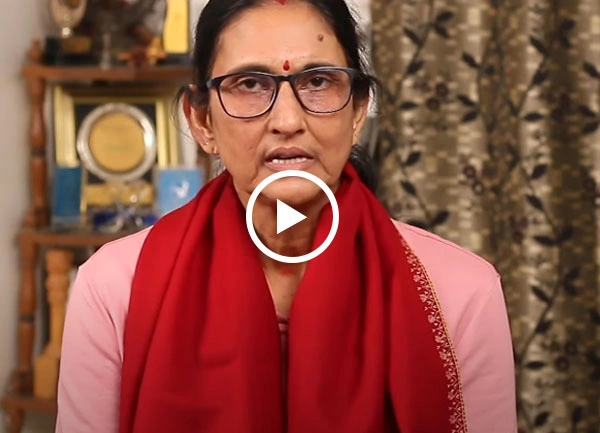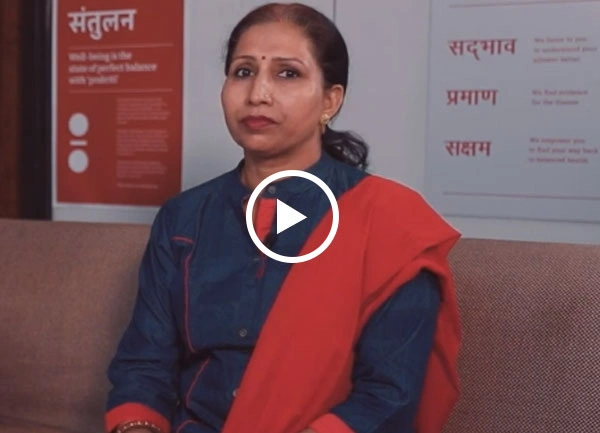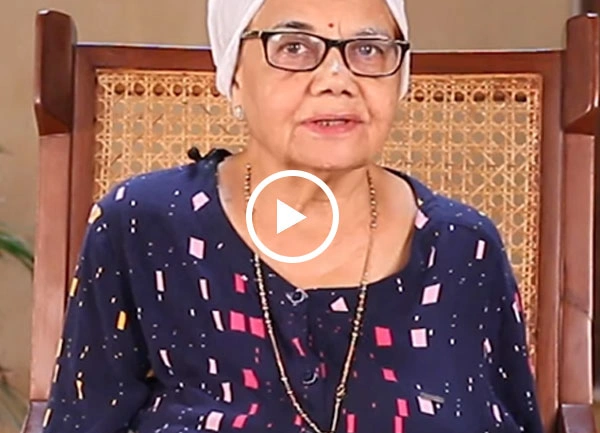

Successful Treatments
Clinics
Doctors
What is Vitiligo?
Vitiligo is a skin condition where patches of skin lose their natural colour and become white or much lighter than the surrounding area. This occurs because cells that produce skin pigment, called melanocytes, are destroyed. It can affect anyone, but is usually more noticeable in people with darker skin.
Vitiligo may appear anywhere on the body, including areas with hair that may also become white. It impacts both men and women equally and can start at any age, though it often first shows up before the age of 30.
There are various types of Vitiligo:
- Generalised Vitiligo: This is the most prevalent kind of Vitiligo. It causes patches to appear throughout the body.
- Segmental Vitiligo: This particular type affects just one side of the body or one region, like the hands or face.
- Mucosal Vitiligo: It impacts mucous membranes - the moist linings of the mouth, nose and genitals.
- Focal Vitiligo: In this rare form, white patches develop in a small, specific area and do not spread in the usual pattern.
- Trichrome Vitiligo: This type forms a bullseye pattern, with a white or colourless centre, surrounded by a lighter area and then normal skin tone.
- Universal Vitiligo: This rare type results in loss of pigment in over 80% of the skin.
The real cause of Vitiligo remains unknown, although it's believed to be an autoimmune condition where the immune system mistakenly attacks and destroys good melanocytes. Genetics may also be involved, since Vitiligo can run in families.
Vitiligo is not painful but the patches can be sensitive to the sun. Individuals with Vitiligo should protect their skin and ask for guidance from Ayurvedic physicians to better manage the condition.
Common Causes of Vitiligo
Vitiligo is a condition where the skin loses its natural pigment in patches. Understanding the causes of Vitiligo might help manage the condition effectively. While the root cause of Vitiligo isn't entirely understood, several factors are known to contribute to the development of this condition.
The most common Vitiligo causes include:
- Autoimmune response: The most recognised theory is that Vitiligo is an autoimmune condition. The immune system mistakenly attacks the melanocytes (cells responsible for skin colour), leading to pigment loss.
- Genetic factors: Vitiligo tends to run in families and may have a genetic component. A family history of Vitiligo or other autoimmune conditions increases the chance of developing it.
- Neurogenic factors: Researchers also believe that substances toxic to melanocytes may be released at nerve endings in the skin. This neurochemical destruction may cause pigment loss.
- Self-destruction: There is also a theory that melanocytes may destroy themselves because of an imbalance or malfunction in their structure.
- Stress: Physical or emotional stress may also cause or worsen Vitiligo. Stressful events may stimulate the immune system or upset the hormonal balance and trigger Vitiligo onset.
- Sunburn or skin trauma: Skin injuries like severe sunburn or cuts can lead to development of Vitiligo patches (Koebner phenomenon).
Chemical exposures: Contact with common chemicals used in the workplace or in products can cause Vitiligo. These chemicals could affect melanin production in the skin.
Vitiligo Symptoms
White patches on skin
Premature graying hair
Loss of skin tone
Jiva Ayunique™ Treatment Philosophy - A Holistic Approach to Vitiligo
Jiva Ayurveda offers holistic Vitiligo treatment in Ayurveda using evidence-based approaches. The treatment plans are customised to target the very root causes of the disease, and instead of just treating symptoms, they focus on holistic healing, balance and stability in totality.
Core Principles of the Jiva Ayunique™ Treatment Philosophy
- HACCP certified Ayurvedic medicines: These are scientifically made blends that help to restore balance in your body and promote emotional stability.
- Yoga, Meditation & Mindfulness: These calming practices promote mental health and complete wellbeing.
- Ayurvedic Treatments: Therapies like Panchakarma and therapeutic massages cleanse the body and promote emotional balance.
- Diet and Lifestyle Changes: Expert advice on changing your eating habits and lifestyle for better health.
Ayurvedic Medicines for Vitiligo
Ayurveda offers natural treatment options for Vitiligo including herbs that help to restore skin pigmentation and balance the body’s energies. They are used individually or in combination to prepare potent Ayurvedic medicines to manage and reduce Vitiligo symptoms.
Some effective Ayurvedic medicines for Vitiligo are:
- Bakuchi (Psoralea Corylifolia): Bakuchi is an important Ayurvedic medicine for Vitiligo treatment that stimulates skin repigmentation. It also contains properties that encourage the growth of new pigment cells.
- Khadir (Acacia Catechu): Khadir is believed to reduce white patches and improve skin appearance. It functions mainly by purifying the blood and by detoxifying the skin.
- Chitrak (Plumbago Zeylanica root): Chitrak is used for its digestive and anti-inflammatory properties which can help correct digestive issues related to skin conditions.
- Jatamansi (Nardostachys Jatamansi root): This herb is known in Ayurveda for its nerve-soothing effects, reducing stress and improving skin health.
- Amalaki (Emblica Officinalis): Amalaki is a rich source of Vitamin C that strengthens immunity and revitalises the skin, aiding in the repair of depigmented areas
- Manjistha (Rubia Cordifolia): Manjistha is a known blood purifier that helps maintain skin health and colour by addressing the root cause of pigment loss.
- Neem (Azadirachta Indica): Neem is used to treat Vitiligo because of its antioxidant and immune-modulating qualities that protect and stimulate melanocytes (cells that produce skin pigment).
- Haritaki (Terminalia Chebula): Haritaki is believed to remove toxins from the body that damage melanocytes and support skin health.
- Giloy (Tinospora Cordifolia): Giloy can help improve immunity and protect melanocytes from further damage from autoimmune responses.
- Turmeric (Curcuma Longa): Turmeric possesses anti-inflammatory and antioxidant properties and can be used topically to reduce skin inflammation and aid pigmentation recovery.
- Ginger: Ginger is used in Ayurveda to improve circulation and encourage skin renewal, which can help restore the skin's natural colour.
- Triphala: Triphala, a blend of three fruits, helps with digestion and detoxification, which are important for healthy skin and for treating skin conditions such as Vitiligo.
Frequently Asked Questions About Vitiligo
What causes Vitiligo to start spreading?
Vitiligo spreads when the immune system mistakenly attacks healthy melanocytes. Stress, skin trauma and chemical exposure also can cause spreading.
Is there an Ayurvedic cure for Vitiligo?
Ayurveda can help control and even reduce Vitiligo symptoms with herbal treatments and lifestyle changes, if taken consistently.
How fast does Vitiligo spread?
The rate of Vitiligo spreading varies widely. Some people experience rapid spreading and others take months or years before they notice spreading.
Is Vitiligo contagious?
No, Vitiligo isn't contagious. You can not catch it from anybody else.
Can diet affect Vitiligo?
Yes, Ayurveda says a healthy diet devoid of artificial additives and excessive sour foods may help manage Vitiligo.
How is Vitiligo diagnosed in Ayurveda?
In Ayurveda, Vitiligo is diagnosed after physical examination and assessment of dosha imbalance. The Ayurvedic practitioner may also consider family medical history.
Can Vitiligo affect children?
Yes, children can develop Vitiligo, often developing symptoms before the age of 10.
Is sunlight exposure good or bad for Vitiligo?
Moderate sunlight is good because it stimulates the skin's pigment cells. But overexposure may damage depigmented patches, leading to sunburn.
What are some Ayurvedic lifestyle tips for managing Vitiligo?
Yoga, controlling stress and maintaining skin hygiene are suggested to aid treatment and prevent further worsening of the condition.
Are there any Ayurvedic external treatments for Vitiligo?
Yes, herbal pastes made from turmeric and mustard oil and other medicated oils can help ease the symptoms of Vitiligo.
How do Ayurvedic treatments prevent Vitiligo from spreading?
By balancing the body’s energy system and boosting skin health, Ayurvedic treatments can help manage Vitiligo symptoms and prevent further spreading.
Meta Description
Get effective Ayurvedic treatments for Vitiligo at Jiva. Our treatments include consultation with the top Ayurvedic doctors in India, Ayurvedic medicines, diet plans, advanced therapies and post-treatment preventive measures.
References:
https://pmc.ncbi.nlm.nih.gov/articles/PMC3215421/
https://pmc.ncbi.nlm.nih.gov/articles/PMC5816300/
Top Ayurveda Doctors
Our Happy Patients
Blogs
- Use Natural Remedies for Relief in Vitiligo with Ayurveda
- Eye care as per Ayurveda
- How To Cure Vitiligo Fast Naturally?
- Vitiligo Diet - Best Food for Vitiligo
- Get Ayurvedic Treatment For Vitiligo
- Tired of Dull Skin? Try These 5 Ayurvedic Hacks
- World Vitiligo Day: Debunking Myths and Embracing Ayurvedic Truths
- क्या त्वचा पर छोटे-छोटे सफ़ेद धब्बे उभरना Vitiligo का शुरुआती संकेत है? आयुर्वेदिक दृष्टि से समझें
- क्या धूप में जाने पर सफ़ेद दाग और ज़्यादा साफ़ दिखने लगते हैं? Vitiligo को आयुर्वेद की नज़र से जानें
- क्या बार-बार पेट संबंधी समस्याएँ—गैस, अपच, कब्ज़—Vitiligo को ट्रिगर करती हैं? आयुर्वेदिक व्याख्या देखें
Home Remedies
- रूखे और बेजान बालों का आयुर्वेदिक इलाज और मुफ़्त परामर्श
- पिगमेंटेशन का इलाज - घरेलू नुस्खे और मुफ़्त परामर्श
- फंगल इंफेक्शन का इलाज - घरेलू नुस्खे और मुफ़्त परामर्श
- चेहरे की टैनिंग हटाने के घरेलू उपाय - मुफ़्त परामर्श
- Scalp की खुजली का आयुर्वेदिक इलाज - मुफ़्त परामर्श
- क्या आपकी त्वचा बेजान हो गई है? ये आयुर्वेदिक नुस्खे देंगे नैचुरल ग्लो
- झड़ते बालों से परेशान? ये आयुर्वेदिक नुस्खे देंगे घने और मजबूत बाल
- पिंपल्स से छुटकारा पाना मुश्किल लग रहा है? आज़माएं ये असरदार घरेलू नुस्खे!
- क्या आप जानते हैं? इन देसी नुस्खों से डार्क सर्कल्स गायब हो सकते हैं
- डैंड्रफ का जड़ से इलाज – घर पर आजमाएं ये आसान नुस्खे
- Home Remedies for Open Pores
- Home Remedies for Glowing Skin
- Home Remedies For Itchy Scalp
- Home Remedies for Hair Fall
- Home Remedies for Dry Hair
- Home Remedies for Black Spots on Face
- Home Remedies for Hair Loss
- Home Remedies for Pigmentation
- Home Remedies for Face Tan
- Home Remedies for Fungal Infections
- Home Remedies for Dandruff
- Home Remedies for Pimples
- Home Remedies for Dark Circles
Related Disease
- Ayurvedic Treatment for Vitiligo
- Ayurvedic Treatment for Urticaria Hives
- Psoriasis
- Ayurvedic Treatment for Hair loss and Regrowth
- Ayurvedic Treatment for Skin allergy
- Ayurvedic Treatment For Dandruff
- Ayurvedic Treatment for ringworm
- Ayurvedic Treatment for Eczema
- Ayurvedic Treatment for Psoriasis
- Ayurvedic Treatment for Acanthosis Nigricans
- Ayurvedic Treatment for Alopecia Areata
- Ayurvedic Treatment for Chicken Pox
- Ayurvedic Treatment for Folliculitis
- Ayurvedic Treatment for Athlete’s Foot
- Ayurvedic Treatment for Pityriasis Rosea
- Ayurvedic Treatment for Pemphigus Vulgaris
- Ayurvedic Treatment for Phlebitis
- Ayurvedic Treatment for Angioedema
- Get Ayurvedic Treatment For Impetigo
- Lichen Planus Treatment in Ayurveda
- Ayurvedic Treatment for Carbuncle
- Ayurvedic Treatment for Cellulitis
- Ayurvedic Treatment for Shingles
- Ayurvedic Treatment for Seborrheic Dermatitis
- Ayurvedic Treatment for Atopic Dermatitis
- Ayurvedic Treatment for Dermatitis
- Get Ayurvedic Treatment for Lipoma
- Ayurvedic Treatment for Keloids
- Ayurvedic Treatment For Xanthelasma
- Ayurvedic Treatment for Scabis
- Ayurvedic Treatment For Warts
- Ayurvedic Treatment For Dark Circles
- Ayurvedic Treatment For Hyperpigmentation
- Ayurvedic Treatment for Glowing Skin
- Ayurvedic Treatment For Fungal Infection
- Get Ayurvedic Treatment for Rosacea
- Get Ayurvedic Treatment for Contact Dermatitis
- Ayurvedic Treatment for Acne
- Ayurvedic Treatment for Leprosy
Latest Blogs
- क्या वैरिकोज़ वेन्स और DVT एक-दूसरे से जुड़े हैं? आयुर्वेद बताता है असली फर्क
- क्या त्वचा पर कुछ हिस्सों का अचानक रंग हल्का होने लगना Hypopigmentation है या Vitiligo? आयुर्वेदिक भेद समझें
- क्या धब्बों के आसपास खुजली या हल्की जलन Vitiligo flare का संकेत है? आयुर्वेदिक दृष्टि से समझें
- क्या रसायनिक उत्पाद, रंग-बिरंगे क्रीम या फ्रेगरेंस त्वचा पर दाग बढ़ा सकते हैं? Vitiligo में त्वचा-संवेदनशीलता आयुर्वेद से जानें
- क्या परिवार में पहले से Vitiligo होने पर बच्चों में इसका खतरा बढ़ जाता है? आयुर्वेदिक कारण समझें
- क्या तनाव बढ़ते ही सफ़ेद दाग फैलने लगते हैं? Vitiligo में मन-त्वचा संबंध आयुर्वेद की नज़र से जानें
- क्या बार-बार पेट संबंधी समस्याएँ—गैस, अपच, कब्ज़—Vitiligo को ट्रिगर करती हैं? आयुर्वेदिक व्याख्या देखें
- क्या धूप में जाने पर सफ़ेद दाग और ज़्यादा साफ़ दिखने लगते हैं? Vitiligo को आयुर्वेद की नज़र से जानें
- क्या त्वचा पर छोटे-छोटे सफ़ेद धब्बे उभरना Vitiligo का शुरुआती संकेत है? आयुर्वेदिक दृष्टि से समझें
- क्या सोरायसिस में त्वचा के साथ-साथ जोड़ों में दर्द (Psoriatic Arthritis) भी शुरू हो सकता है? आयुर्वेदिक दृष्टि से संकेत देखें
- क्या बार-बार स्टेरॉइड क्रीम लगाए बिना राहत नहीं मिलती? Psoriasis में मूल कारण कैसे समझता है आयुर्वेद—जानें
- क्या गर्मी और मसालेदार भोजन आपके Psoriasis को तुरंत flare-up करते हैं? आयुर्वेदिक कारण जानें
- क्या बार-बार त्वचा को मॉइस्चराइज़ करने पर भी सूखापन और जलन कम नहीं होती? Psoriasis को आयुर्वेद की नज़र से समझें
- क्या घुटनों, कोहनियों और पीठ पर मोटे patches बनना Psoriasis का विशिष्ट लक्षण है? आयुर्वेदिक व्याख्या जानें
- क्या बार-बार एलर्जी जैसी खुजली और जलन Psoriasis की ओर इशारा कर सकती है? आयुर्वेदिक दृष्टिकोण से समझें
- क्या सिर की त्वचा पर लगातार पपड़ी गिरना Dandruff नहीं—Scalp Psoriasis का लक्षण हो सकता है? आयुर्वेदिक संकेत देखें
- क्या तनाव बढ़ते ही त्वचा पर अचानक flare-up होना Psoriasis का क्लासिक पैटर्न है? आयुर्वेदिक कारण समझें
- क्या ठंड बढ़ते ही त्वचा फटना, लाल धब्बे और खुजली Psoriasis को ट्रिगर करते हैं? आयुर्वेद की नज़र से जानें
- क्या त्वचा पर मोटी, सफ़ेद पपड़ी बनना Psoriasis का शुरुआती संकेत है? आयुर्वेदिक दृष्टि से समझें
- क्या सिर्फ फिज़्योथेरपी से फ्रोज़न शोल्डर ठीक हो सकता है? आयुर्वेद बताता है किस चरण में क्या असरदार है
Ayurvedic Doctor In Top Cities
- Ayurvedic Doctors in Bangalore
- Ayurvedic Doctors in Pune
- Ayurvedic Doctors in Delhi
- Ayurvedic Doctors in Hyderabad
- Ayurvedic Doctors in Indore
- Ayurvedic Doctors in Mumbai
- Ayurvedic Doctors in Lucknow
- Ayurvedic Doctors in Kolkata
- Ayurvedic Doctors in Patna
- Ayurvedic Doctors in Vadodara
- Ayurvedic Doctors in Ahmedabad
- Ayurvedic Doctors in Chandigarh
- Ayurvedic Doctors in Gurugaon
- Ayurvedic Doctors in Jaipur
- Ayurvedic Doctors in Kanpur
- Ayurvedic Doctors in Noida
- Ayurvedic Doctors in Ranchi
- Ayurvedic Doctors in Bhopal
- Ayurvedic Doctors in Ludhiana
- Ayurvedic Doctors in Dehradun


























